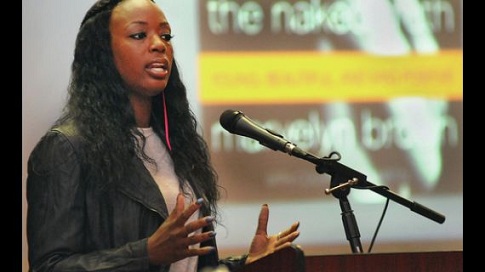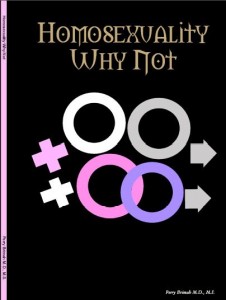February 8th, 2012

NewsRescue- February 7th marked the 12th annual National Black HIV/AIDS Awareness Day. But the date was marked with gloom, as HIV rates are far from comforting in Black America and the populace is anything but aware of the epidemic. According to the CDC (Center for Disease Control), over 1.2 Million Americans are infected with HIV, and there is a 13 % rise in infections with 50,000 new cases every year. Black Americans are the worst hit. Blacks who represent only 14% of the total American population are responsible for half the new HIV cases in America. According to latest estimates, 1 in 16 Black men will be infected with HIV at some point in their lives. For black women, the rate is 1 in 32.
Related: NewsRescue- Herpes, HIV plagues Black America
CDC: Males who Sex Males are highest risk
There has been an alarming 48% increase in new HIV infections from 2006 to 2009 among young, black men who have sex with men (MSM), aged 13 to 29 years according to the CDC. Anal intercourse carries the highest risk of HIV contraction, and studies show that MSM have a higher ratio of sex partners than heterosexual males, which also increases the risk in this population bracket. According to a recent study published in the Sexually Transmitted Diseases journal; About half (49%) of respondents reported having concurrent sexual partnerships during the past 6 months. Among MSM with concurrent sexual partnerships, 62% had only male partners and 38% had both male and female partners. The proportion of inconsistent condom use was 42% among MSM with concurrent partners and 30% among MSM without. The study concluded that: The large number of MSM engaging in concurrent sexual partnerships and the high prevalence of bisexuality could accelerate the spread of HIV to the general population.
According to the CDC report, next in risk were black women, who are far more affected by HIV than women of other races, with an over 15 times higher rate of new infections than white women, and an over 3 times higher rate of infection than Latino women.
Related: NewsRescue- HIV AIDS Leading Cause Of Death For Black Women 25-34 In America

There are many reasons why Blacks bear the greater HIV burden. These include stigmatization- Blacks have the highest level of undiagnosed cases of all populations. The reasons being their not wishing to check their status for fear of social isolation. Blacks do not engage in higher risk sexual activity than other races, however blacks engage in most sexual activity within their race and this leads to a recirculation of risk. Furthermore, blacks have the highest rates of MSM behavior and undisclosed bisexuality ‘down-low’, behavior than other groups. According to the CDC, in 21 major cities, 28% of black MSM were infected with HIV, and a staggering 59% of those did not know they were infected. This puts the black community at greater risk. Socio-economic dynamics also contribute to the epidemic in Black America, with many cities having higher rates than averages in Africa.
Experts say that the leading cause of H.I.V. in black men is homosexual sex (some of which takes place in prison, where blacks disproportionately outnumber whites). According to the Centers for Disease Control, one-third of young urban black men who have sex with men in this country are H.I.V.-positive…
We don’t hear much about this aspect of the epidemic, mostly because the two communities most directly affected by it — the black and gay communities — have spent the better part of two decades eyeing each other through a haze of denial or studied disinterest. For African-Americans, facing and addressing the black AIDS crisis would require talking honestly and compassionately about homosexuality — and that has proved remarkably difficult, whether it be in black churches, in black organizations or on inner-city playgrounds. The mainstream gay world, for its part, has spent 20 years largely fighting the epidemic among white, openly gay men, showing little sustained interest in reaching minorities who have sex with men and who refuse to call themselves gay.
Related: NewsRescue- Death for Uganda’s gays: Bill back on the table
Poverty Fuels the African-American HIV Epidemic
The U.S. Centers for Disease Control and Prevention (CDC) released results of a study in July 2010 discussing the HIV epidemic in impoverished urban areas of the United States. The results of the study show that those who live in poverty, African American or not, had an HIV prevalence of 2.4 percent compared to those who live above the poverty line, with a prevalence of 1.2 percent. African Americans experience a 2.1 percent HIV prevalence if living in poverty, compared to a 1.7 percent overall rate for African Americans. 46 percent of African Americans live in poverty compared to 10 percent of whites. This highlights the disparities of just being African American in the United States.
Related: NewsRescue- HIV Still Plagues the U.S.: Some Areas Have Higher Rates Than Africa – Newsweek
People who live in poverty are more concerned with food and housing than condom negotiation and safe sex behaviors. Mothers are concerned about how to feed their kids tonight and maintain a roof over their heads instead of adherence to medications. Many persons who live in poverty have unstable housing, which for women can be defined as living with a man who provides for them and their kids. Therefore, the woman is less likely to negotiate safe sex in order to satisfy the person providing for her than if she had her own stable housing.
Persons who live in poverty often live in areas where there are fewer resources available such as HIV education and testing. Poverty also leads to illegal behaviors such as drug use, as a coping skill; or drug trade, to provide income. Both lead to increased risk of HIV as it has been shown that drug trade increases incarceration, which removes African-American men from the community and therefore increases sharing of partners by women due to lack of available male partners. And let’s not start to speak about recidivism in African-American communities and the impact on relationships.
H.I.V. is often the least of their worries
These are the worlds of late Dr Hamza Brimah, a Nigerian-born physician who received training in AIDS care in London and New York, opened the Magnolia Medical Clinic in a strip mall here in affiliation with the Greenwood Leflore Hospital. Dr. Brimah is the only AIDS specialist in a nine-county area. He started with fewer than 10 AIDS patients. Now he has 185. He assumes he is seeing only a fraction of those who are actually infected.
”In the beginning, I remembered everybody’s name,” Dr. Brimah said. ”Now I have a hard time. Who’s this? Who’s that? They’re coming at me so fast.”
Sixty percent of Dr. Brimah’s AIDS patients are women and 95 percent are black, in an area where 61 percent of the population is black. Almost all were infected through heterosexual transmission, and a majority, he estimates, came to him with a history of sexually transmitted disease.
Research has shown that people with sexually transmitted diseases like syphilis, gonorrhea and chlamydia have twice to five times the risk of contracting H.I.V., because the diseases cause ulcerations in protective mucous membranes. The South has consistently had the country’s highest rates of sexually transmitted diseases. In 1999, for instance, 9 of the 10 states with the highest rates of gonorrhea and syphilis and 7 of the 10 with the highest rates of chlamydia were in the South, according to C.D.C. figures.
Dr. Brimah hears from his patients that H.I.V. is often the least of their worries. ”There are issues,” he said, ”of looking after children, trying to get insurance, the lack of a father in the home, alcohol, drugs. They have so much going on.”
Because of that, he said, women rarely seek out H.I.V. testing for themselves or their partners. Many of his patients, like Ms. Roney, learn that they are positive only when they become pregnant.
The other thing Dr. Brimah hears repeatedly from his patients is that they understood before they were infected that H.I.V. could be transmitted heterosexually. Typically, they hold no misconceptions that H.I.V. victimizes only gay white men. And yet, like smokers, speeders and drug users, they place themselves knowingly at risk.
Dr. Brimah told of one patient who dutifully took annual H.I.V. tests for three years, who clearly understood the nature of the virus and who then tested positive in the fourth year. ”She was clued up, but she took the risk,” he said. ”She really couldn’t explain it.”
Often, though not always, drugs and money play a vital role as well. Indeed, Dr. Brimah said the desperate need for money had become an H.I.V. risk factor in the Delta in the same way that needle-sharing was in the cities.
What to do: Spread the word
The Obama administration promised 50 million dollars for the battle against HIV and AIDS, but this figure is simply too small and will barely have an impact in combating the ignored HIV epidemic in Black America. Squarely put, due to the wars and US foreign affairs, the administration does not have money to deal with the crises. Indeed the HIV budget has been cut in recent years in most major cities in America, and of course Black Americans are feeling the brunt of this. Recently when a NewsRescue correspondent questioned the New York state commissioner of health, on the epidemic, he frankly responded: Sorry, but there is simply no money, we even have less than prior years, so you and I must do our parts. And this is all that can be done. The public must go on its own, spreading awareness and drumming in the harsh reality of the epidemic that unfairly, accurately targets Black America, a population endangered.




